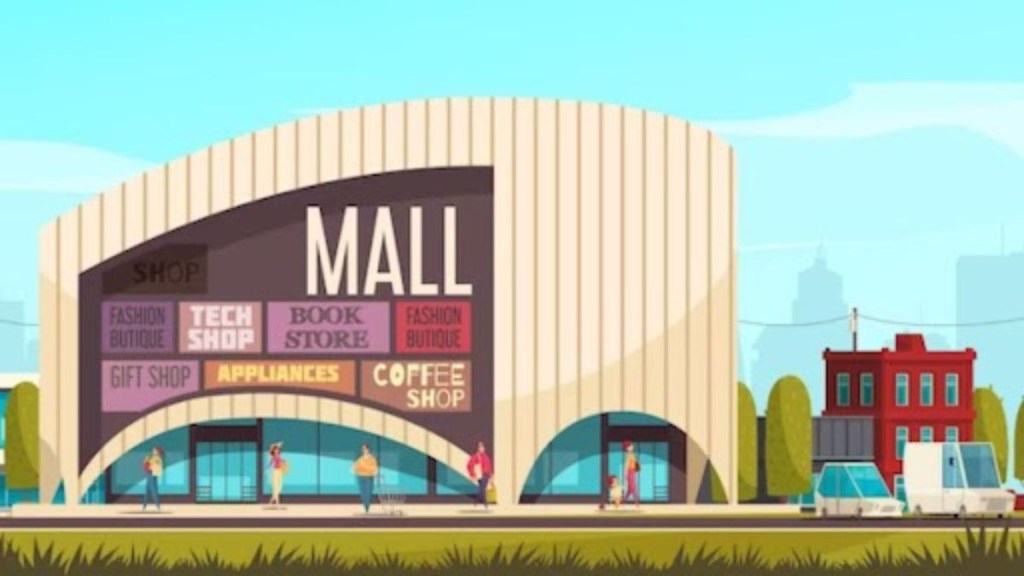It’s that time of the year when you shop till you drop! True to this, shopping malls have begun to clock a rise in footfall. Besides the urge to buy new clothes and other household items, it is also the season of discounts and offerings, which also brings consumers to malls. “Despite the challenges posed by the Covid-19 pandemic, the shopping mall industry in India has shown signs of a strong recovery. The footfall at shopping malls in India is expected to reach 90% of pre-Covid levels by the end of 2023, these footfalls have reached or even exceeded pre-Covid levels. However, the industry is still facing some challenges, such as the shift towards online shopping, lack of talent, high rentals, and overall slowdown in the economy, among others,” Rajat Wahi, partner, Deloitte India, told BrandWagon Online.
Organised brick-and-mortar retail, a considerable part of which are malls and shopping centres, is expected to grow at a rate of approximately 17% CAGR (compound annual growth rate) for 2022–2028 than the overall retail market, as per the ‘Recognising malls and shopping centres as a new-age industry’ report by Deloitte-SCAI (Shopping Centres Association of India).
Not a dull moment!
As consumers return to malls, it is estimated that of over 500 malls across India, as of H1,2022, 271 malls are operational with a total area of 92.9 million square feet in eight cities including Ahmedabad, Bengaluru, Chennai, Hyderabad, Kolkata, Mumbai, National Capital Region (NCR) and Pune. Furthermore, about 50% of total malls in India are concentrated in the following markets including the NCR at 34%, followed by Mumbai at 18% and Bengaluru at 17%. “Post-covid, we have had better than expected response from the customer. Footfalls and sales have been way better than the 2019 numbers. We have breached the 2019 numbers in 2022, and are continuing to witness a year-on-year growth,” Arjun Gehlot, director, Ambience Group, added.
When it comes to recovery, the festive season is perhaps the best time to cash in on this. As a result, from real-estate companies to retailers, all join hands to make the best of it. “During the festive season, the footfalls in our malls and shopping centres typically witness a substantial increase compared to regular days. On average, the footfalls surge by approximately 40% during the festive season, reflecting the heightened consumer interest and enthusiasm for shopping and celebratory activities,” Shibu Philips, director – shopping malls, Lulu Group India, said.
For store owners, offers are one side of the game, it is also the fact that now certain malls have an array of premium brands, which has been a reason for consumers doing the rounds of malls. “Entering high-street stores typically having a clearer idea of their purchase intentions and the brand’s offerings. In contrast, mall visitors might be casually strolling or not entirely committed to making purchases,” Harshwardhan Patwardhan, founder, Chappers, explained.
Laws of attraction!
While brands advertise from time to time to generate both buzz and sales across media, in the case of shopping malls the advertising is largely restricted to print medium and out-of-home (OOH). “Our all-encompassing communication strategy includes Print, OOH, social media marketing with a strong emphasis on influencer collaborations, and also public relations,” Rohit Gopalani, senior vice president – leasing, marketing and corporate communications, Inorbit Malls, said.
Meanwhile, Nexus Mall claims to be going desi with local artisans. “We had contracted over 75 artisans, who worked on close to a million recycled corrugated sheets to put together the cultural heritage of India. We have recreated monuments such as India Gate, Hawa Mahal, Konark Temple, Lotus Temple, among others,” Nishank Joshi, CMO, Nexus Malls, explained. Similarly, Aditya Modak, co-founder, Gargi by P N Gadgil & Sons, claims that investment in SEO (search engine optimisation) and SMO (social media optimisation), have helped in gaining traction.
Queuing up!
To be sure, shopping malls account for about 12% of the overall retail market in India in 2022 and accounts for about 1.2% of India’s GDP. The report further revealed that this is expected to grow as corroborated by the increase in the number of malls from three in 2000 to more than 530 in 122 cities by 2022. The Deloitte report further suggests that 82% of the people visit malls for the sole purpose of shopping, followed by watching movies, dining, and outings besides attending gaming zones with 73%, 56%, 56% and 22% respectively. Interestingly, 18% of respondents agreed that they visit malls for festival celebrations. “FMCG products experience consistent demand throughout the year, the festive season witnesses a significant surge in the demand for apparel and wearables. Additionally, there is a noticeable increase in the interest for electronics and gadgets, as consumers actively seek out the latest technological advancements and gifting options for their loved ones,” Philips explained.
Industry experts opine that the categories which have witnessed a major uptick include electronics and telecommunications, fashion accessories, jewellery and watches. For Gaurav Balani, DGM-marketing, Infiniti Mall, it is the food and beverage (F&B) and apparel category which is predicted to be leading the chart with maximum sales. “With the festive spirit setting in, the demand for traditional garments is expected to rise. Further, festivities lead to outings with family and friends, thereby facilitating an increase in footfalls at restaurants and eateries,” Balani added.
Furthermore, going by the data from Deloitte, apparel accounted for the largest share of sales at shopping malls with 30%. “Followed by electronics/gadgets at 15%, home appliances (10%), and food and beverages (10%),” Wahi added.

